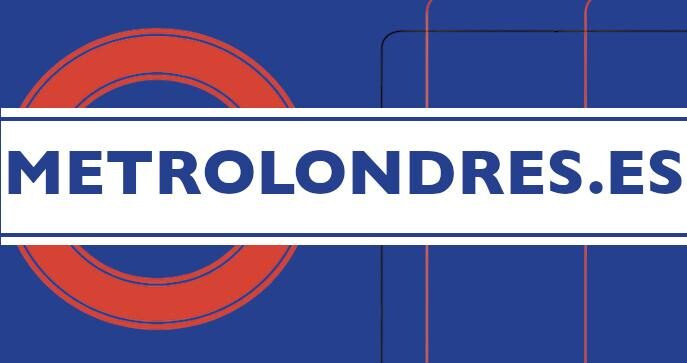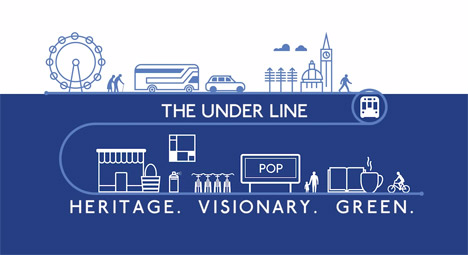As we mentioned when discussing the history of the London Underground, there are many stations that are no longer in use due to route changes, line mergers, and other reasons. These abandoned stations present a unique opportunity for innovation. A notable example is the British Museum station, located between Tottenham Court Road and Holborn on the Central Line, which has been closed since the 1930s. Another abandoned station is Down Street on the Piccadilly Line.
The architecture firm Gensler has proposed giving these forgotten spaces a new purpose in response to the overutilization of other transportation means in the city, now that London has reached the highest population level in its history. The idea is to use these abandoned spaces to offer bike lanes, and safer, less crowded pedestrian paths than surface roads. Additionally, they could also house shops, cafes, and cultural offerings for pedestrians.
Ian Mulcahey, co-director of Gensler London, emphasizes the need for creative solutions to maximize the potential of London’s infrastructure. According to Mulcahey, these unused underground spaces represent an opportunity to relieve surface congestion and improve urban mobility sustainably.
Implementation of Pavegen Technology
The firm proposes using a system called Pavegen instead of conventional paving slabs for tunnel floors. This technology converts the energy from footsteps into electricity, transforming kinetic energy into electrical energy. The company suggests implementing it in stations like Charing Cross or Holborn to ensure an efficient system where the network produces more energy than it consumes and is self-sufficient.
The Pavegen system has already been tested in various pilot projects around the world with promising results. By harnessing the energy generated by pedestrian traffic, these slabs can power LED lighting and other electrical systems, contributing to a greener and more sustainable transportation network.
Benefits of Station Renovation
The reuse of abandoned stations could offer multiple benefits. Firstly, it would provide a safe and less congested alternative for cyclists and pedestrians. Secondly, it would revitalize underutilized areas, creating new commercial and cultural spaces. Finally, the integration of green technology like Pavegen would contribute to London’s sustainability goals.
Additionally, these revitalized stations could serve as community gathering points, offering a safe and accessible place for social activities and events. The combination of transportation infrastructure and mixed-use spaces could significantly transform the urban experience in London.
But It’s Not That Easy.
Despite the numerous benefits, implementing this project presents significant challenges. Renovating underground stations requires considerable investment and careful planning to ensure safety and accessibility. Additionally, it is crucial to obtain community and local authority support to carry out these projects.
Another challenge is the integration of Pavegen technology. While the technology has proven effective in pilot projects, its large-scale implementation in the London Underground would require a thorough cost-benefit evaluation and a long-term maintenance plan.
Additional Ideas from My Sleeve.
Besides the mentioned uses, there are other innovative ideas to consider for repurposing abandoned London Underground stations:
1. Co-Working Spaces
With the rise of remote work and startups, abandoned stations could be transformed into modern co-working spaces. Equipped with high-speed internet, meeting areas, and cafes, these spaces could attract professionals and entrepreneurs looking for an inspiring and well-connected workplace.
2. Museums and Art Galleries
Abandoned stations offer a unique environment for museums and art galleries. Temporary or permanent exhibitions could use these spaces to attract tourists and residents, offering a unique cultural experience in the heart of London.
3. Wellness Centers
Another idea is to convert these spaces into wellness centers with gyms, yoga studios, and meditation rooms. This approach would not only revitalize the stations but also promote a healthy lifestyle among Londoners.
4. Underground Gardens
Inspired by initiatives like New York’s Lowline, abandoned stations could be transformed into underground gardens. Using reflective sunlight technology and hydroponic systems, these gardens could offer a green oasis in the city center, contributing to urban biodiversity and providing a relaxing space for visitors.
Examples of Reusing Abandoned Stations Worldwide
In different parts of the world, innovative projects are already reusing abandoned metro stations. Here are some examples:
1. Lowline in New York
The Lowline is a project in New York that aims to transform an old trolley station in the Lower East Side into an underground park. It uses solar technology to illuminate and power an underground garden, offering a unique green space in one of the world’s densest cities.
2. The Underline in Miami
The Underline is a project that converts the space beneath Miami’s elevated metro system into a linear park. It includes bike and pedestrian paths, recreational areas, and green spaces, providing a new way to connect communities and promote an active lifestyle.
3. Secret Tunnel in Paris
In Paris, an abandoned metro station has been turned into a secret urban art tunnel. Local artists use the station’s walls to create murals and artworks, transforming the space into an underground gallery that attracts visitors and tourists.
So, What’s Next?
Gensler’s proposal to reuse abandoned London Underground stations is an innovative solution that addresses multiple urban issues. By combining transportation infrastructure, green technology, and community spaces, this initiative has the potential to transform mobility and urban life in London. However, to make this vision a reality, significant challenges must be overcome, and support from all stakeholders is essential.
In the following video, you can see a more detailed explanation of Gensler’s proposal and how they plan to implement these solutions.
What do you think of the idea? Leave us your comments and share your thoughts on this innovative proposal for the London Underground.

